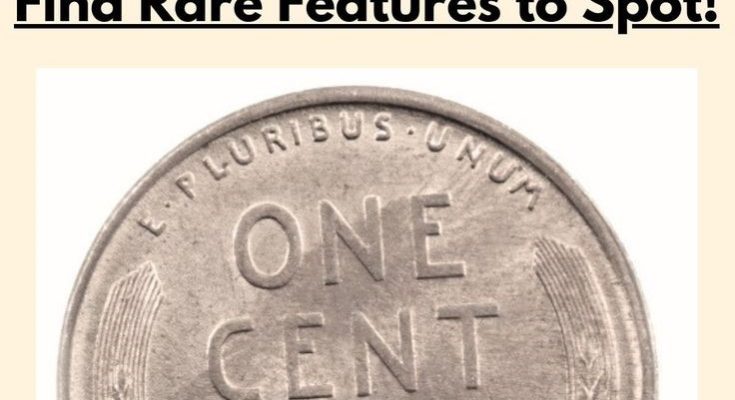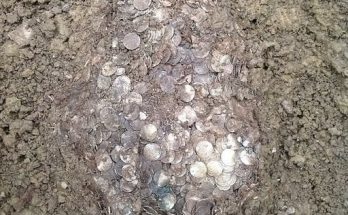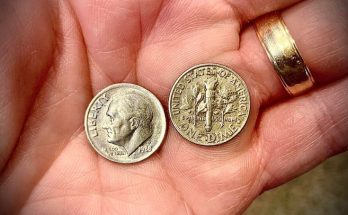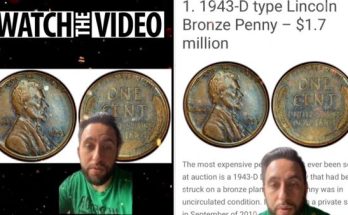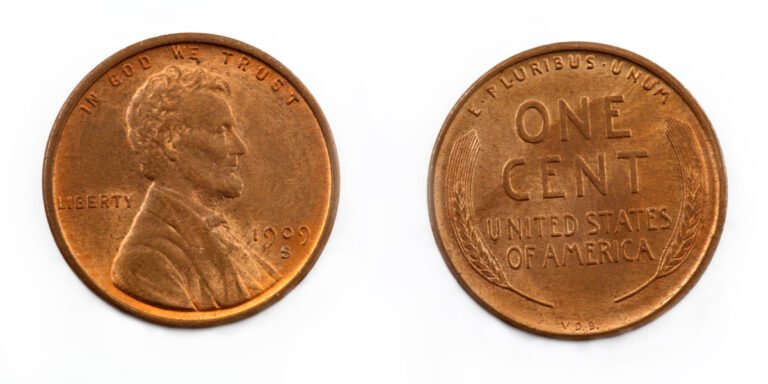
Imagine holding an old, small copper coin worth more than a luxury car! The 1909 VDB Lincoln Penny, with a face value of just one cent, is one such coin that has fetched astronomical prices at auctions in the past. That’s right! A single 1909-S VDB penny, graded MS67, sold for a staggering $168,000 at an auction, nearly 20 million times its original value!
But are all 1909 VDB pennies worth big bucks? The answer is no! That’s why it’s worth learning the crucial features, such as mint mars and coin errors, determining the actual value of a 1909 VDB Lincoln Cent. In this guide, I will tell you about all these features and guide you to spotting a fake 1909 penny!
History of the 1909 VDB Lincoln Pennies
The 1909 pennies are the first coins of the new Lincoln Penny series, replacing the preceding Indian Head Cent series. These coins were the first regular U.S. coins to feature a portrait of a real person and the motto “In God We Trust” on a one-cent piece.
The initial release of this coin includes a version with its designer, Victor David Brenner’s initials “V.D.B.” on the reverse below the wheat stalks. However, due to controversy, the U.S. Treasury later ordered the removal of the initials from the coin.
Nonetheless, the 1909 Lincoln penny became a vital part of American numismatics, with the “V.D.B.” variety gaining significant value and popularity among collectors. The coin’s design continued to be used in all succeeding pennies, with a major change on the reverse in 1959 with the commencement of the Lincoln Memorial cent!
| 1909 Lincoln Penny | Key Features |
| Material Composition | Bronze (95% Copper, 5% Tin & Zinc) |
| Minting Location | Philadelphia, San Francisco |
| Year of Minting | 1909 |
| Face Value | One-cent |
| Weight | 3.11 grams |
| Diameter | 19 mm |
| Thickness | 1.52 mm |
| Designer | Victor David Brenner |
| Mint Marks | No Mint Mark (Philadelphia Mint) S-mint mark (San Francisco Mint) |
| Total Mintage (All Mints) | 28,479,000 1909 |
How to Spot a 1909 VDB Lincoln Penny (Design & Composition)
You can identify an authentic 1909 VDB Lincoln Wheat Penny by verifying the unique design elements on its front and back.
1909 Lincoln Penny Obverse (Heads):
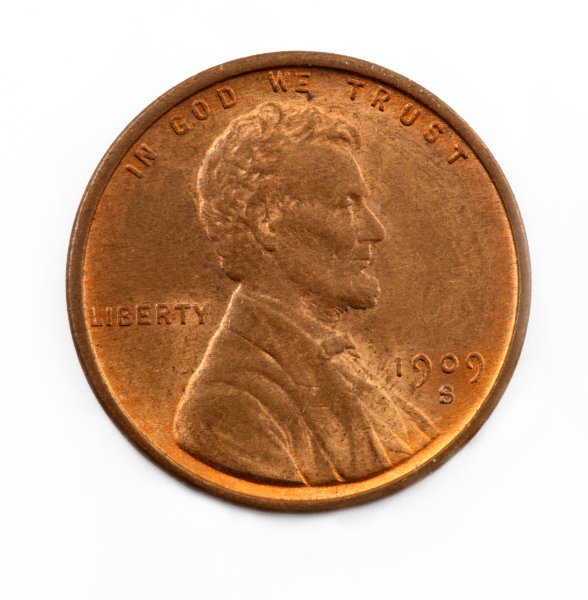
- The right profile of 16th U.S. President, Abraham Lincoln
- The words “IN GOD, WE TRUST” written on the top, along the edge
- The mint date ‘1909’ on the bottom right side
- The word ‘LIBERTY’ on the left side
- The mint mark “S” or “D” (if present) below the mint year
1909 Lincoln Penny Reverse (Tails):
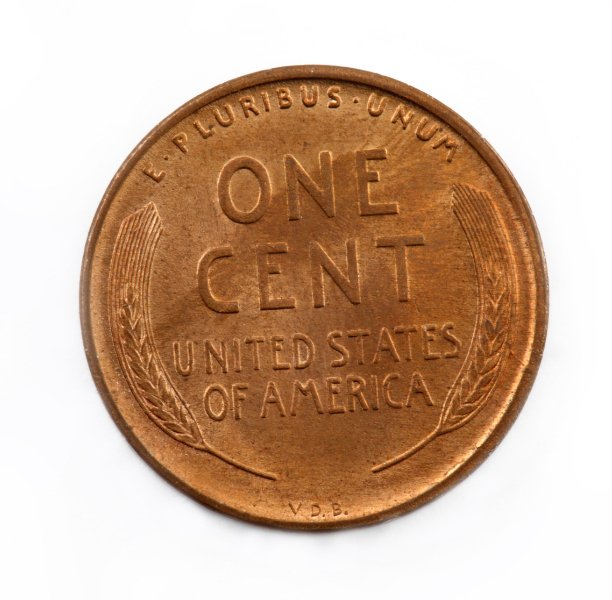
- The “E. PLURIBUS UNUM” phrase written on the top, along the edge
- The words “ONE CENT” at the center
- Words “UNITED STATES OF AMERICA” written right below the face value/denomination
- Two wheat ears surrounding the words “ONE CENT” and “UNITED STATES OF AMERICA”
- The initials “VDB” in small font at the bottom
Coin Composition & Dimensions:
The 1909 VDB Lincoln penny is composed of 95% copper and 5% tin and zinc, giving it a distinctive reddish-brown hue and a weight of approximately 3.11 grams (0.11 ounces). This bronze alloy composition was standard for pennies until 1982 when the U.S. Mint transitioned to a zinc composition.
As for the dimensions, the 1909 VDB Wheat copper cent has a diameter of 19.05 millimeters (0.75 inches) and a thickness of approximately 1.55 millimeters (0.061 inches). These measurements are consistent with the specifications for one-cent coins produced during that era.
5 Factors to Assess the 1909 VDB Lincoln Penny Coin Value
A 1909 VDB Lincoln Penny is one of the most valuable American pennies, whose price can range from a few hundred dollars to as much as $160,000, depending on various factors.
💌 Daily One Friendly Email from Me on Old & Antique Wonders
One email, 5 minutes, countless discoveries. No SPAM, just our shared love for old treasures.
1. Mintage & Mint Marks
The 1909 VDB Lincoln Penny was struck at Philadelphia and San Francisco Mints, producing 28,479,000 1909 pennies.
1909 VDB Lincoln Penny No Mint Mark
The Philadelphia Mint, which produced coins without a mint mark, struck the largest quantity of 1909 Lincoln pennies. Their total mintage reached an impressive 100 million coins, including 27,995,000 coins of the coveted V.D.B. variety featuring the designer’s initials.
Despite this high mintage, the 1909-P V.D.B., a penny can double the value of regular 1909 Lincoln cents in a high-grade mint state. One such rare MS68 1909 VDB penny sold for $56,400 on Heritage Auctions.
1909-S VDB Lincoln Penny
The San Francisco Mint struck 2.3 million pennies in 1909, with the “S” mint mark on the obverse below the mint date. Out of these, 484,000 pennies had the VDB initials on the reverse, making them extremely rare and valuable.
While the 1909-s pennies are worth $9,000 – $25,000 in high-grade mint states, like MS67+, the 1909-S VDB coin can sell for around $50,000 to $160,000 for the same grade. One MS67 1909-S V.D.B. Lincoln Cent sold for an auction record price of $168,000 on Stack’s Bowers.
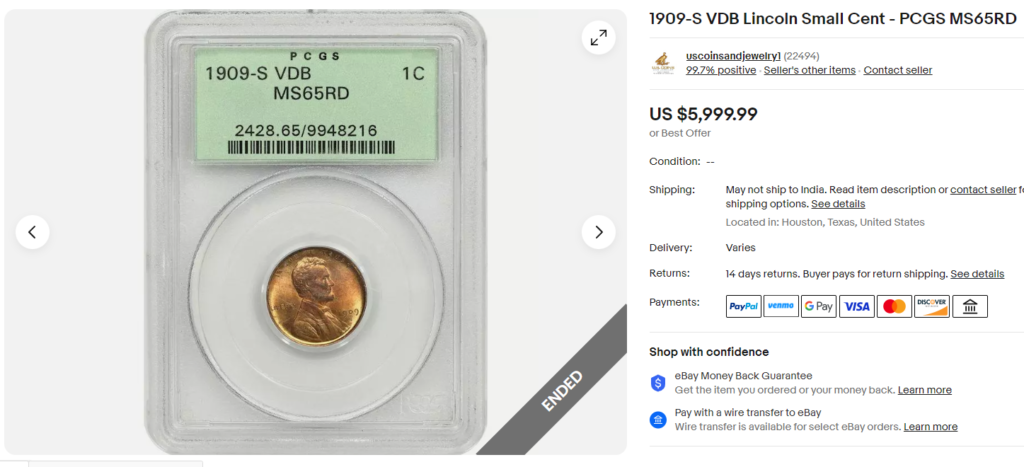
| 1909 VDB Wheat Penny Mint Marks | Total Mintage |
| 1909-P VDB Lincoln Penny (no mint mark) | 27,995,000 |
| 1909-S VDB Lincoln Penny | 484,000 |
2. Coin Grade & Condition
The condition of a 1909 VDB Lincoln Penny coin, as graded by professional services like PCGS (Professional Coin Grading Service) or NGC (Numismatic Guaranty Corporation), is the first crucial factor that impacts its value. Higher grades 1909 VDB pennies, such as MS67+ or MS68, fetch higher prices than lower grades pennies like XF (Extremely Fine).
You can assess the average value of your penny using this 1909 VDB Penny value chair based on coin grading.
| Coin Grading | 1909-p VDB 1C | 1909-S VDB 1C |
| Poor (0) to Extremely Fine (XF45) | Below $10 | $50 – $200 |
| Almost Uncirculated (AU50) to Mint State (MS60) | Below $20 | $400 – $1,000 |
| Mint State (MS60 – MS66+) | $20 – $550 | $1,000 – $30,000 |
| Mint State (MS67 onwards) | $1,500 – $9,000 | $35,000 – $170,000 |
3. Color Colors
The toning of a 1909 VDB copper penny is another crucial factor determining its value. Due to the range of toning or discoloration, this coin exhibits three different color varieties: Red, Red and Brown (RB), and Brown (BN).
- Brown (BN): BN-toned pennies have undergone the most extensive toning, resulting in an overall brown or dark coloration. The 1909 VDB BN pennies can sell for $3,000 to $10,000, while the regular 1909 BN pennies are worth only $1,000 – $2,000 in mint state.
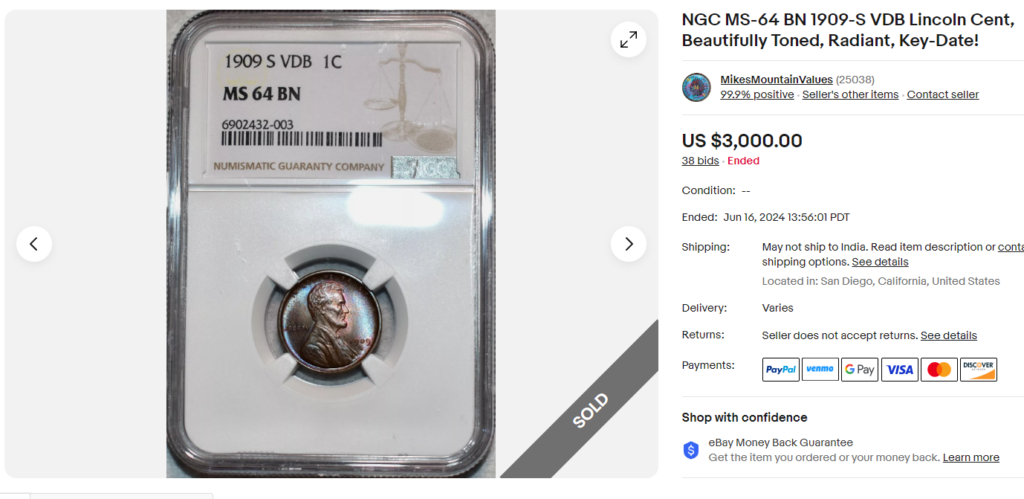
- Red and Brown (RB): The RB pennies show brown toning in different areas, giving the surface red and brown patches. An RB 1909 Lincoln Penny is generally worth around $10,000 to $20,000 in mint state.
- Red (RD): A 1909 penny in Red (RD) condition maintains its original copper-red color with minimal discoloration. These coins are highly valuable, especially the Red (RD) VDB pennies with an S mint mark, fetching prices ranging from $50,000 to $150,000, while those with no mint mark can sell for up to $2,000 to $50,000 in high mint grades like MS67+ to MS68.
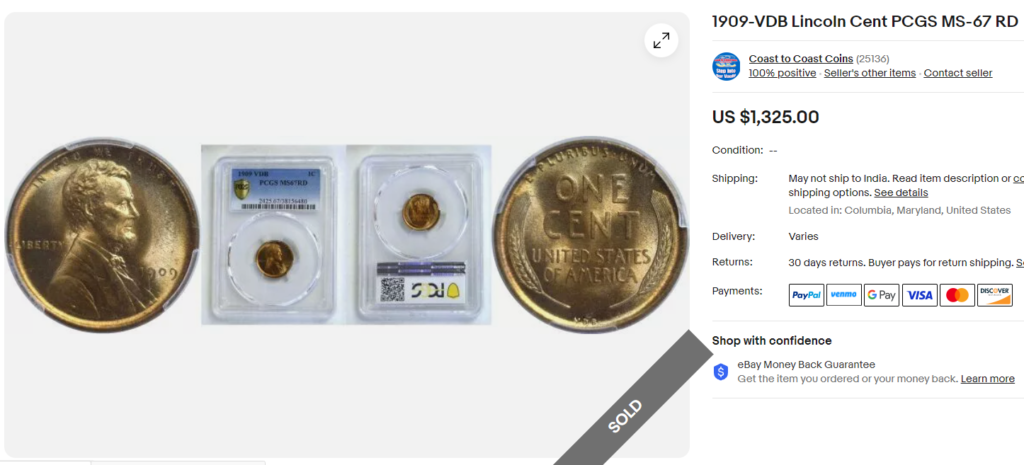
4. Rare Mint Errors in 1909 VDB Wheat Lincoln Penny
A mint error caused during the coin minting process can significantly impact the value of a 1909 VDB Wheat Penny. You can find the following anomalies on these pennies and assess their worth based on the examples below.
1909 VDB Doubled Die Obverse (DDO):
The DDO error results in a noticeable doubling of the design elements on the coin’s obverse. This doubling can appear on the letters in “VDB,” Lincoln’s profile, and on letters and numbers. This error can significantly increase the value of a 1909 wheat penny.
For example, an MS66 1909 VDB 1C coin generally sells for $200 – $600, while an MS66 1909 VDB DDO error coin is worth $2,000 – $5,500.
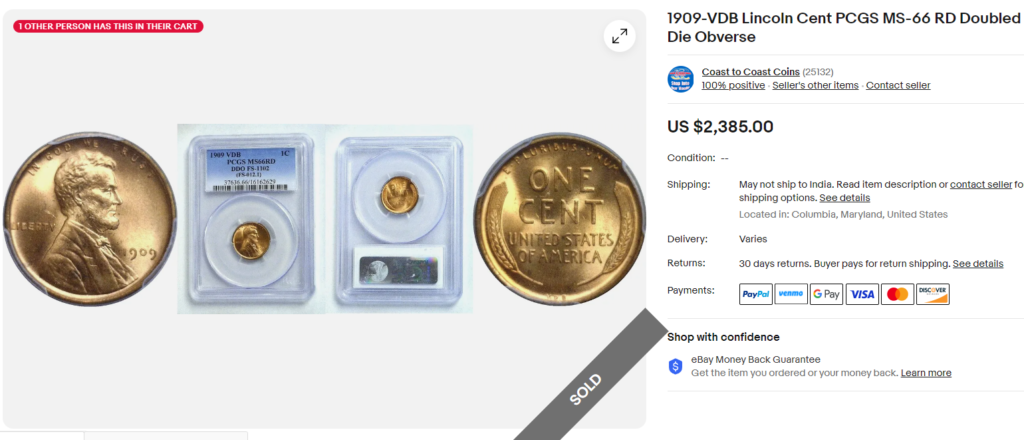
Off-center Strike
In a 1909 VDB off-center strike, the coin’s design is not centered, leaving a portion of its surface blank. The degree of misalignment can vary, with more severe off-center strikes being more visually striking and often more valuable.
One example of this 1909 VDB error coin in Very Fine (VF35) condition is listed for a price of $1,275 on Heritage Auctions. Mint state examples can be worth much more.
Apart from these, you can also spot common minting errors, such as die cracks, cud errors, double strike errors, or rare wrong planchet errors, on the 1909 VDB pennies. Depending on the condition and toning, these can be worth from a few hundred to a few thousand dollars.
5. 1909 VDB Matte Proof Lincoln Wheat Cent
In 1909, there were a total of 3,546 proof pennies struck at the Philadelphia Mint for coin collectors. Out of these, 1,194 proof coins had the V.B.D. initials, which are more valuable than regular 1909 Proof cents.
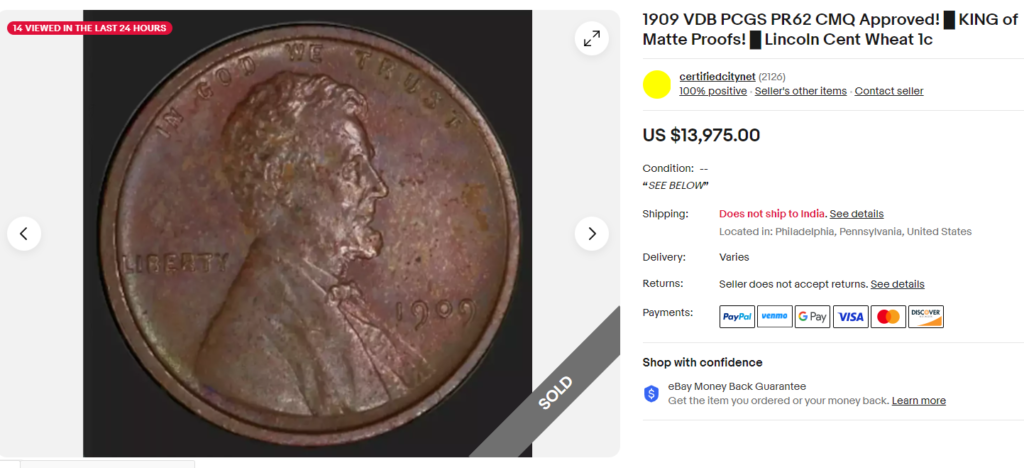
You can identify a 1909 VDB Proof Lincoln Wheat Cent with the following features:
- Unique matte finish
- Sharp details
- A satiny, textured appearance
- Sharp VDB initials on the reverse
How to Spot a 1909 VDB Wheat Penny Counterfeit
Identifying a fake 1909 VDB Lincoln Penny (often mistakenly written as VDB) involves several steps to ensure authenticity.
- Check the Date and Mint Mark: Verify the mint year 1909 on the obverse and check for any underlying number. Look for the “VDB” initials on the reverse (tail side) at the bottom of the coin.
- Verify the Composition: The 1909 VDB coin should be composed of 95% copper and 5% tin and zinc. Use a magnet to check if it’s attracted (indicating a steel core often used in counterfeits).
- Check the Weight & Dimensions: Use a precise scale to weigh the coin and measure its dimensions. A genuine 1909 VDB Lincoln penny should be 3.11 grams and 19.05 mm wide.
- Check the Overall Design Details: Pay attention to the “E” and “R” in LIBERTY, as these can differ on counterfeit coins. A genuine coin will have a shallow “N” in “ONE CENT” on the tails. Lastly, the dot between “V.D.B.” should be centered, not off to one side.
